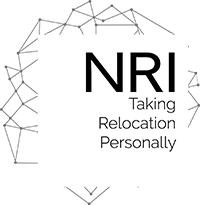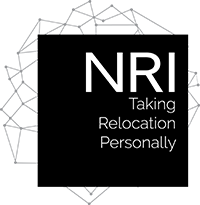
Recruiting for top talent is both an art and a science – however, it’s rarely a simple or quick process. And when you’ve been successful in identifying the best candidate for your organization, you don’t want to lose them after going through all that work. Happily, your relocation policy can offer a significant advantage when it comes to attracting the best candidates and sealing the deal.
Designing a competitive relocation program requires thought, planning and focus. While a one-size-fits-all relocation policy is easy to administer and control, more creativity may increase competitiveness while yielding additional cost control. To make sure your mobility policy is in tip-top shape we’ve provided some points for you to use in making your policy both attractive and useful as a recruiting tool:
Planning is everything
It would seem obvious that a relocation policy should be designed to meet the goals of the employer and the relocating employee. Yet a surprising number of relocation policies are designed mostly for employers – in spite of the fact that employees are usually most affected by a relocation.
The biggest weakness in designing a relocation policy that is both attractive and effective typically lies in a lack of planning. For top-tier talent, it’s critical to be able to address relocation needs beyond just the basics – and many mobility policies fall short.
When designing your relocation policy, make sure you include both standardized procedures for efficiency of delivery and enough flexibility to customize an offer for specific candidates.
Design for win/win
Using your relocation program as a recruiting tool means that the candidate and the employer both get to “win”. Some of the ways your policy can do this includes:
- Provide top tier relocation benefits only to certain key employees.
- Create a two or three-tier relocation program, with reasonable monetary caps.
A single tier relocation policy can be cost effective, but is seldom effective in highly competitive industries. Adjust tiers to recognize the difference in qualifications, skills and value to the company between employees at different career levels.
- Build in flexibility to the top tier.
This flexibility gives hiring managers better negotiating ability to attract key employees and convince top performing staff to agree to the relocation. While it is unproductive to make constant exceptions to written policy, give hiring executives the ability to match or exceed competitive offers for key employees.
- Keep the bottom tier basic and low cost.
Even a no frills relocation offer is better than no relocation offer at all.
Know your numbers
Although the process of relocation can sometimes spring an unwelcome surprise on a mobility budget, the majority of relocation costs can be estimated ahead of time. Performing a needs assessment with every assignee should be standard operating procedure, and should include discovering answers to important questions. Some of these are questions that may be uncomfortable for you to ask from a HR perspective, but they are important questions to ask when you need to maintain cost control while you develop the best relocation offer.
For example, are you married, do you have children, will you be selling your home, what is the estimated value of your home, will you be buying in the new location, what is your price range for purchasing a new home or renting, is your spouse/partner employed, will they work in the new location, do any of your children have special needs/hobbies/interests, would your family be excited to relocate, is there anything that could stop you from taking a transfer? Any one of these questions may seem invasive from an HR point of view, but the answers will have a direct impact on the cost to relocate the family.
Because of the sensitive nature of the information to be discussed during the assessment, many companies choose to have their relocation services partner perform the assessment and estimate costs, based on the answers they receive from the candidate.
Knowing exactly what your candidate needs to relocate or what they consider important relocation benefits will help you construct an irresistible relocation offer for your top talent candidates that could help seal the deal. Keep in mind, this is not about what they “want” but the cost to be considered whether paid by you or the candidate.
In-house or outsource?
A successful relocation has many moving parts and you should realistically evaluate your company’s resources and capabilities to perform specialized relocation tasks. Companies sometimes try to cut costs by assigning relocation responsibilities to HR instead of working with a trusted relocation services provider – and they may be hurting their budget by doing so.
The many details of relocation can be extremely time-consuming and, upon evaluation, many companies realize that it is actually more cost-efficient (and their HR resources are better spent) when they work with a relocation services provider. Leveraging an outsourcing solution, whether wholly, or in part, to shift the burdensome tasks of relocation from HR staff to mobility professionals is a simple way to contain costs and provide better service to both HR and relocating employees.
Document and track
Every well-run company knows the importance of accurately tracking costs. Although it can be time-consuming, tracking costs of your relocations and gathering that data is crucial for ensuring that your mobility program is delivering the best bang for your buck.
A relocation services partner can help your HR department stay on top of expenses and payments – and ensure that your budget stays on track. Additionally, tracking your costs allows you to see where increases are happening, so that you can take proactive action to address them. Tracking also allows you to see where potential savings are possible and to capitalize on them. Also, don’t forget that pesky little detail called “compliance”. Your relocation services partner can also report taxable expenses and the associated gross-up to your payroll team on a timely basis.
Review and evaluate
Reviews are valuable insights into how the relocation progressed from beginning to end and the information gained can be used to tweak your mobility policy for effectiveness and delivery.
In addition, a review can also reveal problems that may affect your employee’s engagement and commitment to the new position – and your retention rate. These insights can be used to identify any issues from the move and allow you time to proactively address them to get the relocated employee back on track.
The information you gather from post-relocation reviews is valuable data you can use to lift your company’s relocation program from being just something used to get employees from one place to the next, and transform it into a valuable part of your recruiting arsenal.
So, take a fresh look at your relocation program. It may just turn out to be your secret weapon in the war for talent.


